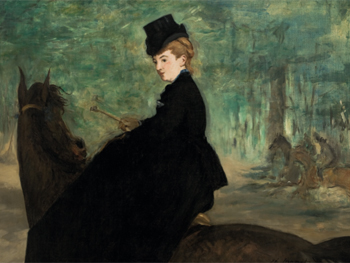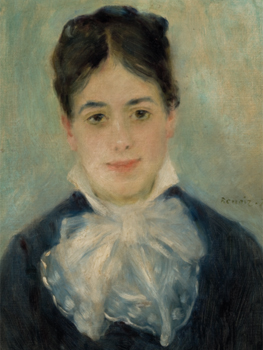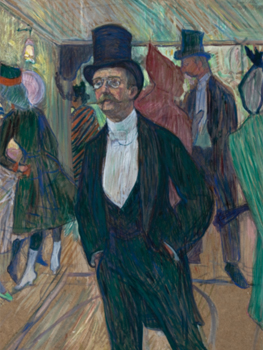
In Madrid, the MAPFRE Foundation is displaying the best portraits from the Sao Paulo Art Museum collection
Édouard Manet
La Amazona. Retrato de Marie Lefébvre, 1870-1875
MASP, Museu de Arte de Sao Paulo Assis Chateaubriand
From the 7th of October to the 20th of December 2009 at the MAPFRE Foundation, Madrid
Curator: José Teixeira Coelho
Works: 33 paintings
Organiser: MAPFRE Foundation Institute of Culture, Sao Paulo Art Museum
“Mirar y ser visto” (Seeing and Being Seen)
INSTITUTO DE CULTURA FUNDACIÓN MAPFRE (RECOLETOS)
Paseo de Recoletos, 23
28004 Madrid
From the 7th of October to the 20th of December 2009
Around 30 portraits carefully culled from the ones in the collection of the recently-created Sao Paulo Art Museum make up “Mirar y ser visto” (Seeing and Being Seen), a show that traces the evolution of portraiture between the 16th and 20th centuries, from Titian to Picasso. The works in this exhibition, which will be on display on the 1st floor of the MAPFRE Foundation’s Recoletos building until December, share their depictions of the individuality of the subject and their determination to endure over time. However, they also display major differences in terms of both their concern with capturing the subject’s identity and the artist’s presence in the work. The latter is more common in the modern age as the portrait has gradually lost ground as the centre of the composition to become a mere pretext that enables the creators to convey their individual, subjective aesthetic visions of art.
“Mirar y ser visto” is conceptually and chronologically comprised of two groups of works: the so-called solemn portraits dating from between the 16th century and the first half of the 19th century, and the modern portraits, dating from the second half of the 19th century and the 20th century. In the works by Velázquez (Portrait of the Count-Duke of Olivares, 1624), Goya (Portrait of Cardinal Luis María de Borbón y Vallabriga, 1798-1800) and Franz Hals (Captain Andries van der Horn, 1638), the subjects appear before a neutral background, in half or full body poses, and in hieratic positions that convey their rank. They are individualised portraits, yet capturing their psychological makeup is not as important as reflecting the power they hold. For this reason, these are timeless pieces, even though their clothing or emblems of authority do enable us to situate them within a given historical period.
The modern portraits are represented in this show with works by Corot, Courbet, Cézanne, Renoir, Manet, Modigliani and Toulouse-Lautrec. They more intensely reflect the subject’s individuality, regardless of their power or social status, yet always under the personal vision of the artists, who introduce movement, in contrast to the physical and spiritual immobility from the previous period. In these portraits, they capture their own personality and their aesthetic, conceptual and spiritual values, as claimed by Süleyman Celibi: I made your person a portrait of my person.
Along with the exhibition “Seeing and Being Seen. From Titian to Picasso. The Portrait in the MASP Collection”, two other shows will also be open to visits at the MAPFRE Foundation Institute of Culture’s Recoletos gallery starting tomorrow. The first is “Ver Italia y morir” (See Italy and Die), organised in conjunction with Paris’ Musée d’Orsay and featuring the paintings and photographs by international artists intrigued by Italy which they rendered on their journeys to that country in the 19th century. The second is “La danza de los colores. En torno a Nijinsky y la abstracción” (The Dance of Colours. On Nijinsky and Abstraction), which spotlights the role of dance and music in the origins of abstract art through drawings by Nijinsky himself, Kupka and Sonia Delaunay, among others. The works in this show come from the Hamburger Kunsthalle collection.

Pierre-Auguste Renoir
Dama sonriendo (Retrato de Alphonsine Fournaise), 1875
MASP Museu de Arte de Sao Paulo Assis Chateaubriand

Toulouse-Lautrec
El señor Fourcade, 1889
MASP, Museu de Arte de Sao Paulo Assis Chateaubriand




